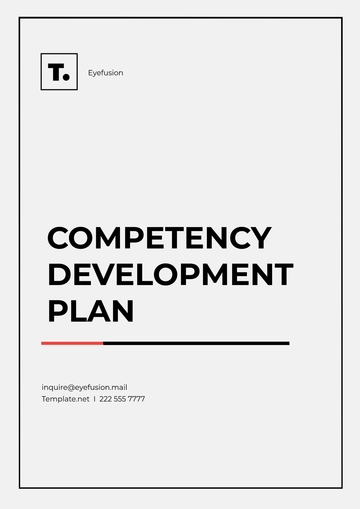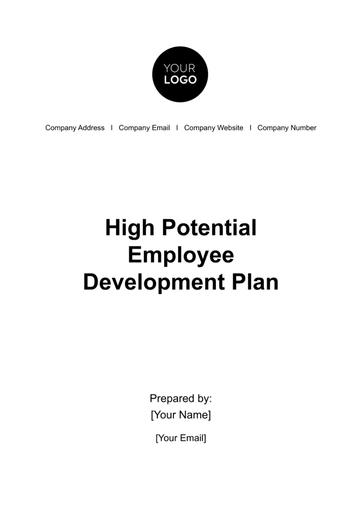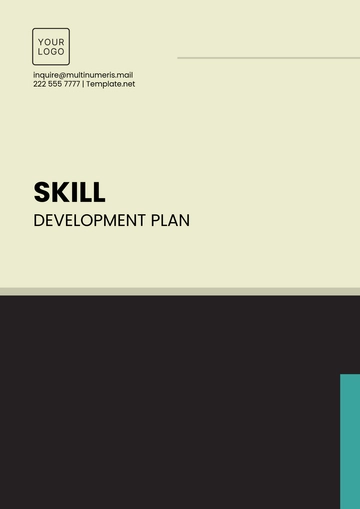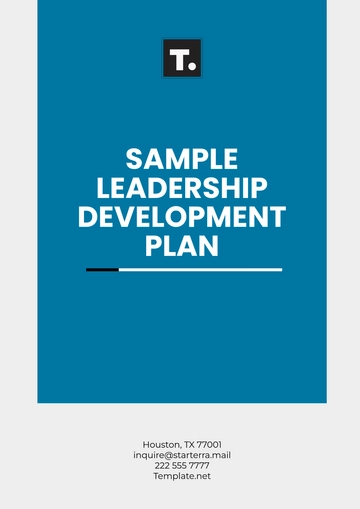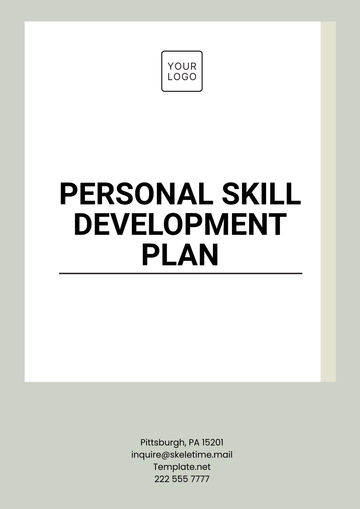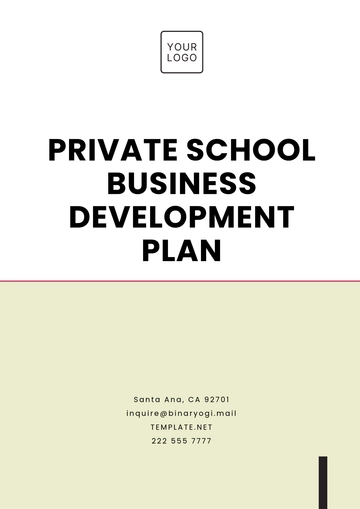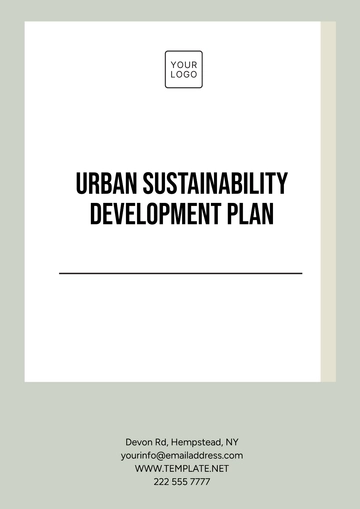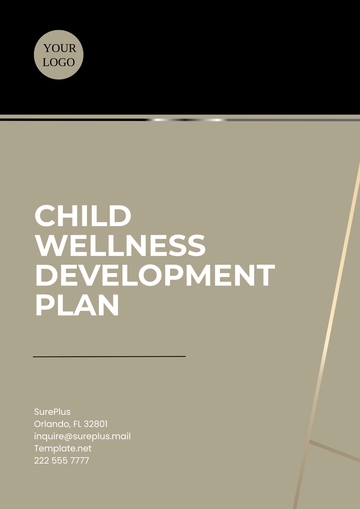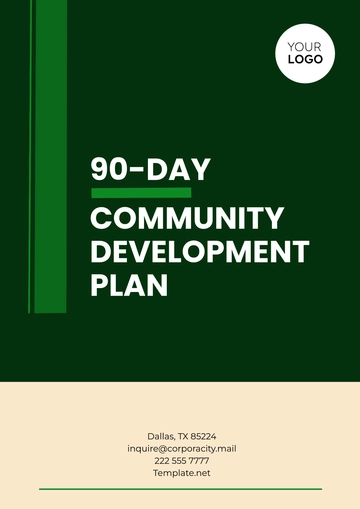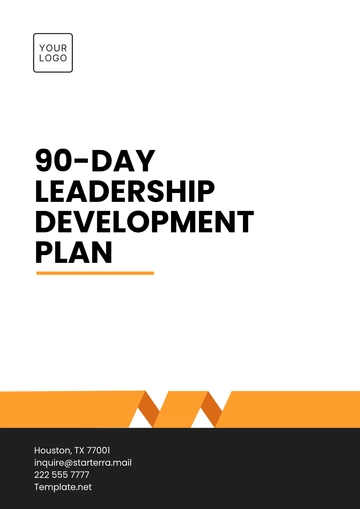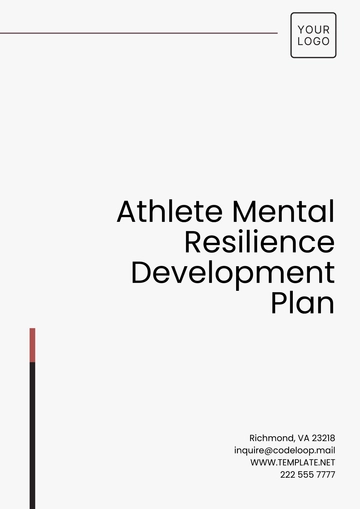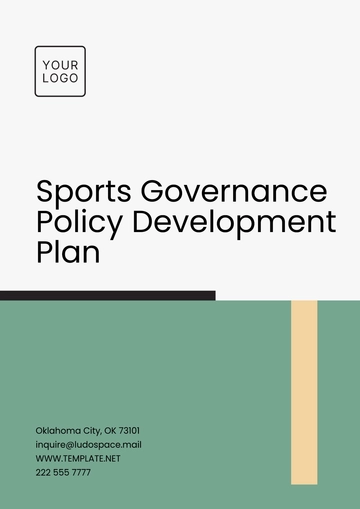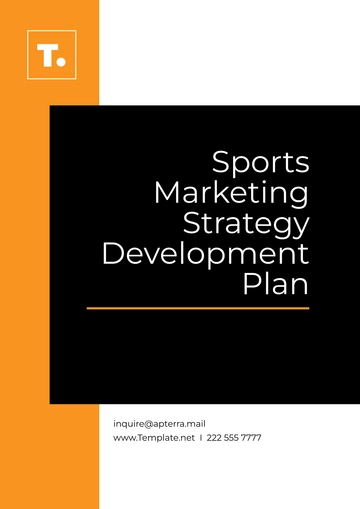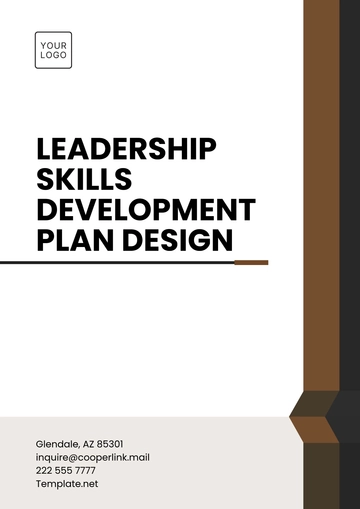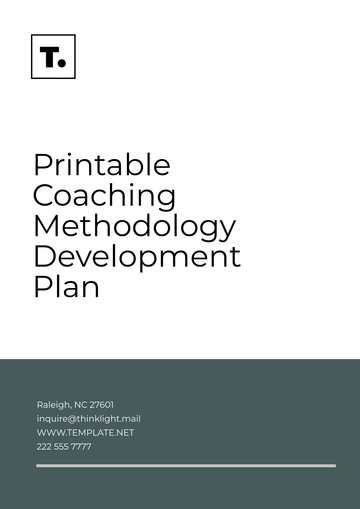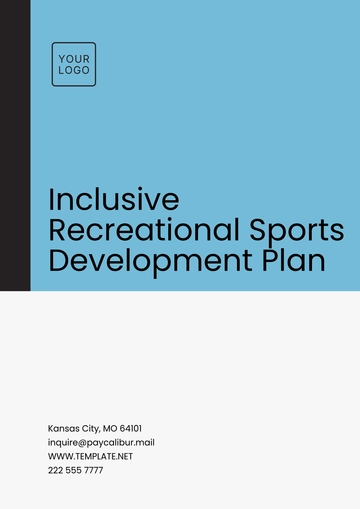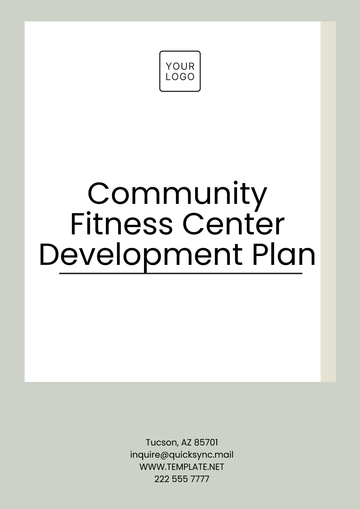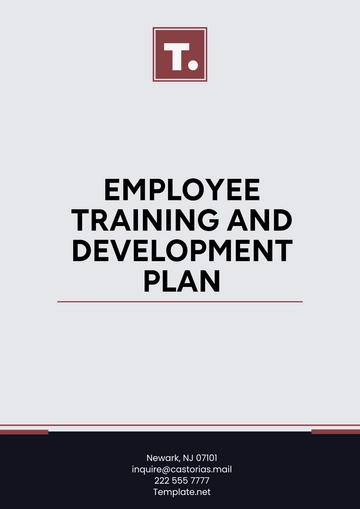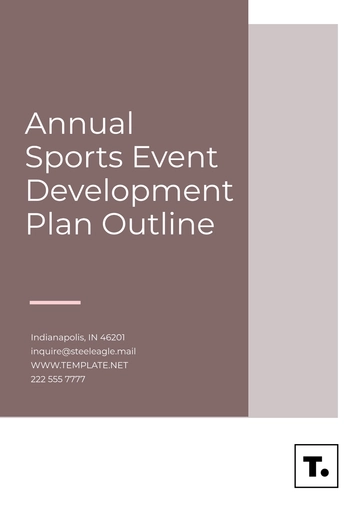Free Car Rental Development Plan
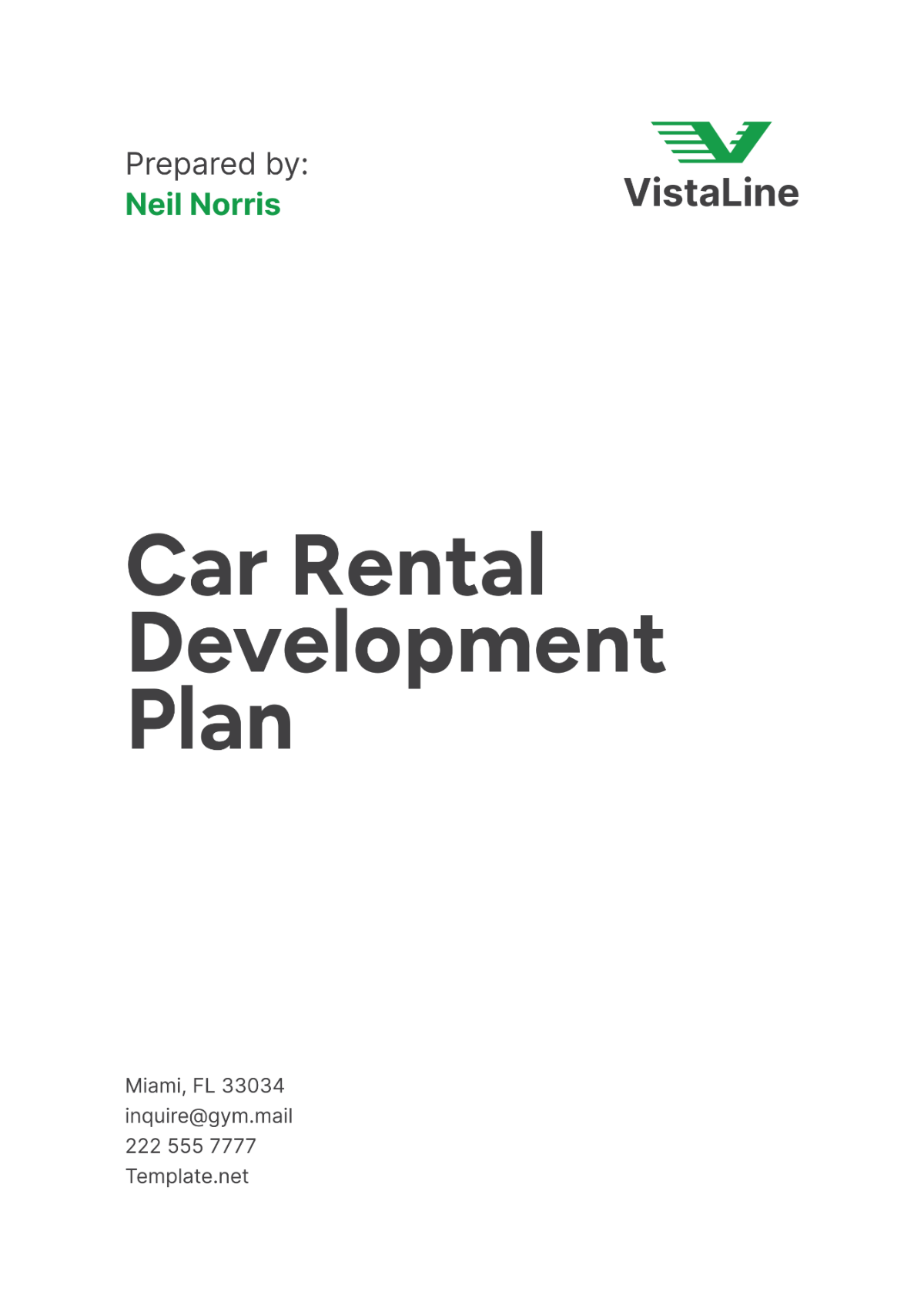
I. Executive Summary
[Your Company Name] is committed to becoming a leading car rental service provider by leveraging strategic growth initiatives and improving operational efficiency. This development plan provides a detailed explanation of our objectives, strategies, and steps that we will undertake to broaden our market presence, improve the satisfaction levels of our customers, and achieve higher profitability.
Financial projections indicate a 20% growth in revenue over the next three years, with expected annual earnings of $5,000,000 by the end of this period. The primary investments will be directed towards several key areas in order to achieve multiple strategic goals. First, there will be a substantial focus on expanding the company's fleet, which is integral to increasing our operational capacity and enhancing service availability. Second, significant resources will be allocated to technological advancements. Last, a critical portion of the investment will be dedicated to marketing efforts.
Our comprehensive development plan includes expanding our service locations, upgrading our fleet with environmentally-friendly vehicles, and implementing advanced customer service technologies. These various initiatives have been meticulously designed to address and satisfy the continually changing, increasing demands and preferences of our valued customers. At the same time, they are intended to ensure that we remain competitive and adaptive within the constantly shifting, highly dynamic, and fiercely competitive landscape of the car rental market.
II. Market Analysis
A. Market Trends
Increasing Demand for Rental Cars: There is a growing demand for rental cars due to increasing urbanization and travel activities. People prefer renting cars for convenience and flexibility.
Technological Advancements: The integration of technology in car rentals, such as mobile apps and online booking systems, has revolutionized the industry. Technological advancements make the rental process more efficient and user-friendly.
Eco-Friendly Vehicles: There is a rising trend towards eco-friendly and hybrid vehicles in the rental market. Consumers are becoming more environmentally conscious and prefer renting fuel-efficient cars.
Short-Term Rentals: Short-term car rentals for weekend getaways or short trips are becoming increasingly popular. This trend is driven by the need for flexible and cost-effective transportation options.
B. Competitive Landscape
Key Competitors: Major competitors include well-established car rental companies with extensive fleets and nationwide presence including Rental Society, Fleet Nova, and Drive Luxe. Understanding their strengths and weaknesses helps in strategizing our market approach.
Market Position: [Your Company Name] currently holds a moderate market share, with potential for growth through targeted marketing and customer acquisition strategies. Our position allows us to capitalize on emerging opportunities.
Pricing Strategies: Competitors employ various pricing strategies, including discounts and loyalty programs. Analyzing these strategies enables us to develop competitive pricing models.
Customer Preferences: Understanding customer preferences, such as preferred vehicle types and rental durations, helps us tailor our offerings to meet market demands.
III. Business Goals
A. Short-Term Goals
Expand Fleet Size: Increase the number of vehicles in our fleet by 15% within the next year to meet rising demand. A larger fleet will enhance availability and customer satisfaction.
Improve Online Presence: Enhance our website and mobile app functionalities to streamline the booking process. Improved online presence will attract tech-savvy customers.
Customer Feedback System: Implement a comprehensive customer feedback system to gather insights and improve services. Customer feedback is crucial for identifying areas for improvement.
Increase Market Share: Aim to increase our market share by 5% in the next year through targeted marketing campaigns. Increased market share will drive revenue growth.
Staff Training Programs: Develop and implement training programs for staff to improve customer service skills. Well-trained staff are key to delivering exceptional customer experiences.
B. Long-Term Goals
National Expansion: Expand our operations to at least five new cities over the next three years. National expansion will increase our market presence and revenue streams.
Fleet Modernization: Upgrade 30% of our fleet to eco-friendly vehicles within the next five years. Modernizing the fleet will attract environmentally conscious customers and reduce operating costs.
Technological Innovation: Invest in advanced technologies, such as AI-driven customer service and automated rental processes. Technological innovation will enhance operational efficiency and customer satisfaction.
Brand Recognition: Achieve high brand recognition through consistent marketing efforts and superior service delivery. Strong brand recognition will differentiate us from competitors.
Financial Growth: Achieve a revenue growth rate of 20% annually over the next five years. Financial growth will ensure long-term sustainability and profitability.
IV. Marketing Strategy
A. Target Audience
Business Travelers: Focus on business travelers who require reliable and convenient transportation. Offering tailored services for business travelers can boost customer loyalty.
Tourists: Attract tourists with special rental packages and promotions. Targeting tourists can increase rental volumes, especially during peak travel seasons.
Local Residents: Encourage local residents to use our services for short-term rentals. Promoting local rentals can generate steady revenue throughout the year.
Corporate Partnerships: Establish partnerships with local businesses for corporate car rental services. Corporate partnerships provide consistent and high-volume rentals.
B. Marketing Channels
Digital Marketing: Utilize digital marketing channels, including social media, email campaigns, and search engine optimization (SEO). Digital marketing can reach a wide audience effectively.
Traditional Advertising: Invest in traditional advertising methods such as billboards, print ads, and radio spots. Traditional advertising can increase brand visibility in local markets.
Partnerships: Collaborate with travel agencies, hotels, and airlines to offer bundled services. Partnerships can expand our customer base and enhance service offerings.
Loyalty Programs: Develop loyalty programs to reward repeat customers. Loyalty programs encourage repeat business and customer retention.
V. Fleet Management
A. Fleet Expansion
The following table details our fleet expansion plan over the next three years:
Year | Current Fleet Size | Additional Vehicles | Total Fleet Size |
|---|---|---|---|
2054 | 100 | 20 | 120 |
2055 | 120 | 25 | 145 |
2056 | 145 | 30 | 175 |
Year 2054: We plan to add 20 new vehicles to our fleet, increasing the total fleet size to 120. This expansion will meet the immediate demand and improve vehicle availability.
Year 2055: An additional 25 vehicles will be added, bringing the fleet size to 145. Continuous expansion ensures that we can cater to a growing customer base.
Year 2056: The fleet will be further expanded by 30 vehicles, reaching a total of 175. This growth strategy positions us to dominate the market and offer diverse vehicle options.
Fleet expansion is crucial for meeting customer demand and maintaining a competitive edge. The presence of a larger fleet significantly boosts the availability of services, subsequently leading to an increase in customer satisfaction. This heightened level of satisfaction has a positive impact on revenue generation, ultimately fostering growth in financial performance for the business.
B. Fleet Maintenance
Regular Inspections: Implement a rigorous inspection schedule to ensure all vehicles are in optimal condition. Regular inspections help prevent breakdowns and ensure safety.
Preventive Maintenance: Adopt a preventive maintenance approach to address potential issues before they become major problems. Preventive maintenance reduces long-term repair costs.
Service Logs: Maintain detailed service logs for each vehicle to track maintenance history. Service logs provide valuable data for decision-making and fleet management.
Partnerships with Service Providers: Establish partnerships with reliable service providers for timely and cost-effective maintenance. Partnerships ensure consistent and high-quality vehicle upkeep.
VI. Technological Advancements
A. Online Booking System
User-Friendly Interface: Develop a user-friendly online booking system to simplify the rental process. A seamless booking experience attracts more customers.
Mobile App Integration: Integrate the booking system with a mobile app for convenient access. Mobile apps offer flexibility and enhance customer engagement.
Real-Time Availability: Ensure real-time vehicle availability updates to provide accurate information. Real-time updates improve customer satisfaction and reduce booking errors.
Secure Payment Gateway: Implement a secure payment gateway to protect customer transactions. Security is crucial for building customer trust and confidence.
B. Customer Relationship Management (CRM)
Personalized Communication: Use CRM software to send personalized communication to customers. Personalized messages improve customer engagement and loyalty.
Customer Data Analysis: Analyze customer data to understand preferences and behavior. Data analysis helps tailor services to meet customer needs.
Feedback Collection: Collect and analyze customer feedback to identify areas for improvement. Feedback is essential for continuous service enhancement.
Automated Follow-Ups: Implement automated follow-ups to ensure timely communication with customers. Automated systems enhance efficiency and customer satisfaction.
VII. Customer Service Excellence
A. Staff Training
Customer Service Skills: Provide regular training sessions to enhance customer service skills. Well-trained staff can deliver exceptional service experiences.
Product Knowledge: Ensure staff have comprehensive knowledge of all rental vehicles and services. Informed staff can assist customers effectively and accurately.
Conflict Resolution: Train staff in conflict resolution techniques to handle customer complaints professionally. Effective conflict resolution maintains customer satisfaction.
Continuous Improvement: Encourage a culture of continuous improvement through ongoing training and development. Continuous learning ensures staff stay updated with industry best practices.
B. Customer Feedback
Feedback Channels: Establish multiple feedback channels, including online surveys and suggestion boxes. Accessible feedback channels encourage customers to share their experiences.
Feedback Analysis: Regularly analyze feedback to identify trends and areas for improvement. Analyzing feedback helps in making informed business decisions.
Responsive Action: Implement responsive actions based on feedback to address customer concerns promptly. Quick responses demonstrate commitment to customer satisfaction.
Recognition Programs: Recognize and reward staff who receive positive feedback from customers. Recognition programs motivate staff to deliver excellent service.
VIII. Budget and Financial Projections
A. Budget Allocation
The following chart and table present the budget allocation for the next three years:
Category | 2054 | 2055 | 2056 |
|---|---|---|---|
Fleet Expansion | $1,000,000 | $1,200,000 | $1,400,000 |
Marketing and Advertising | $500,000 | $600,000 | $700,000 |
Technology Investments | $300,000 | $350,000 | $400,000 |
Staff Training and Development | $200,000 | $250,000 | $300,000 |
Total Budget | $2,000,000 | $2,400,000 | $2,800,000 |
Fleet Expansion: We allocate $1,000,000 in 2054 to expand our fleet, increasing it by 20%. Additional investments in subsequent years will further enhance our operational capacity and customer service.
Marketing and Advertising: A budget of $500,000 in 2054 is allocated to marketing and advertising campaigns aimed at increasing brand visibility and attracting new customers. Incremental increases in the following years reflect our commitment to expanding market reach.
Technology Investments: With $300,000 allocated in 2054, we prioritize investments in technology to enhance our online booking system and customer relationship management tools. This investment supports operational efficiency and improves customer experience.
Staff Training and Development: We dedicate $200,000 in 2054 to staff training and development programs. These initiatives are crucial for equipping our team with the skills necessary to deliver exceptional service and support our growth objectives.
Effective budget allocation is essential for achieving our strategic goals outlined in the development plan. By investing in fleet expansion, marketing initiatives, technology upgrades, and staff development, [Your Company Name] aims to enhance operational efficiency, attract a larger customer base, and maintain competitive advantage in the car rental industry.
B. Revenue Projections
The following chart and table detail our revenue projections over the next three years:
Year | Projected Revenue |
|---|---|
2054 | $4,000,000 |
2055 | $4,800,000 |
2056 | $5,760,000 |
Year 2054: We project a revenue of $4,000,000, driven by fleet expansion and enhanced marketing efforts. This growth sets a strong foundation for future profitability.
Year 2055: Revenue is expected to increase to $4,800,000, reflecting a 20% growth. Continued investments in technology and customer service will fuel this increase.
Year 2056: Projected revenue for 2026 is $5,760,000, indicating sustained growth. Strategic expansion and improved operations will contribute to this financial success.
Revenue projections are vital for setting realistic financial goals and allocating resources effectively. Ensuring the attainment of these specific targets will be instrumental in guaranteeing the long-term sustainability and growth of the business.
IX. Conclusion and Next Steps
A. Conclusion
The Development Plan of [Your Company Name] outlines a comprehensive strategy for business growth and operational excellence. By focusing on market analysis, business goals, marketing strategies, fleet management, technological advancements, customer service, and financial projections, we are well-positioned to achieve our objectives.
Implementing these strategies will not only enhance our market presence but also improve customer satisfaction and drive revenue growth. A steadfast dedication to ongoing enhancement and the pursuit of new, innovative solutions will guarantee sustained, long-term success in the competitive car rental industry.
B. Next Steps
To move forward with the development plan, the following steps will be taken:
Fleet Expansion: Begin the process of acquiring additional vehicles to expand the fleet as outlined in the plan.
Marketing Campaigns: Launch targeted marketing campaigns to attract new customers and increase market share.
Technology Upgrades: Invest in upgrading the online booking system and CRM to enhance customer experience.
Staff Training: Implement comprehensive training programs for staff to improve service delivery and customer satisfaction.
Budget Allocation: Finalize and allocate the budget as per the outlined financial projections and priorities.
By following these steps, [Your Company Name] will be able to effectively implement the development plan and achieve its strategic goals, ensuring sustained growth and success in the car rental industry.
- 100% Customizable, free editor
- Access 1 Million+ Templates, photo’s & graphics
- Download or share as a template
- Click and replace photos, graphics, text, backgrounds
- Resize, crop, AI write & more
- Access advanced editor
Strategize your business growth with the Car Rental Development Plan Template! Available on Template.net, this template is fully customizable, allowing you to tailor it to your specific development goals. Its editable format ensures flexibility in planning various aspects of business development. Plan effortlessly with the AI Editor Tool right away!
